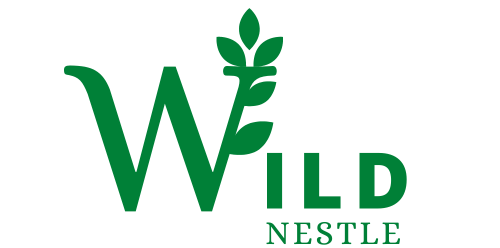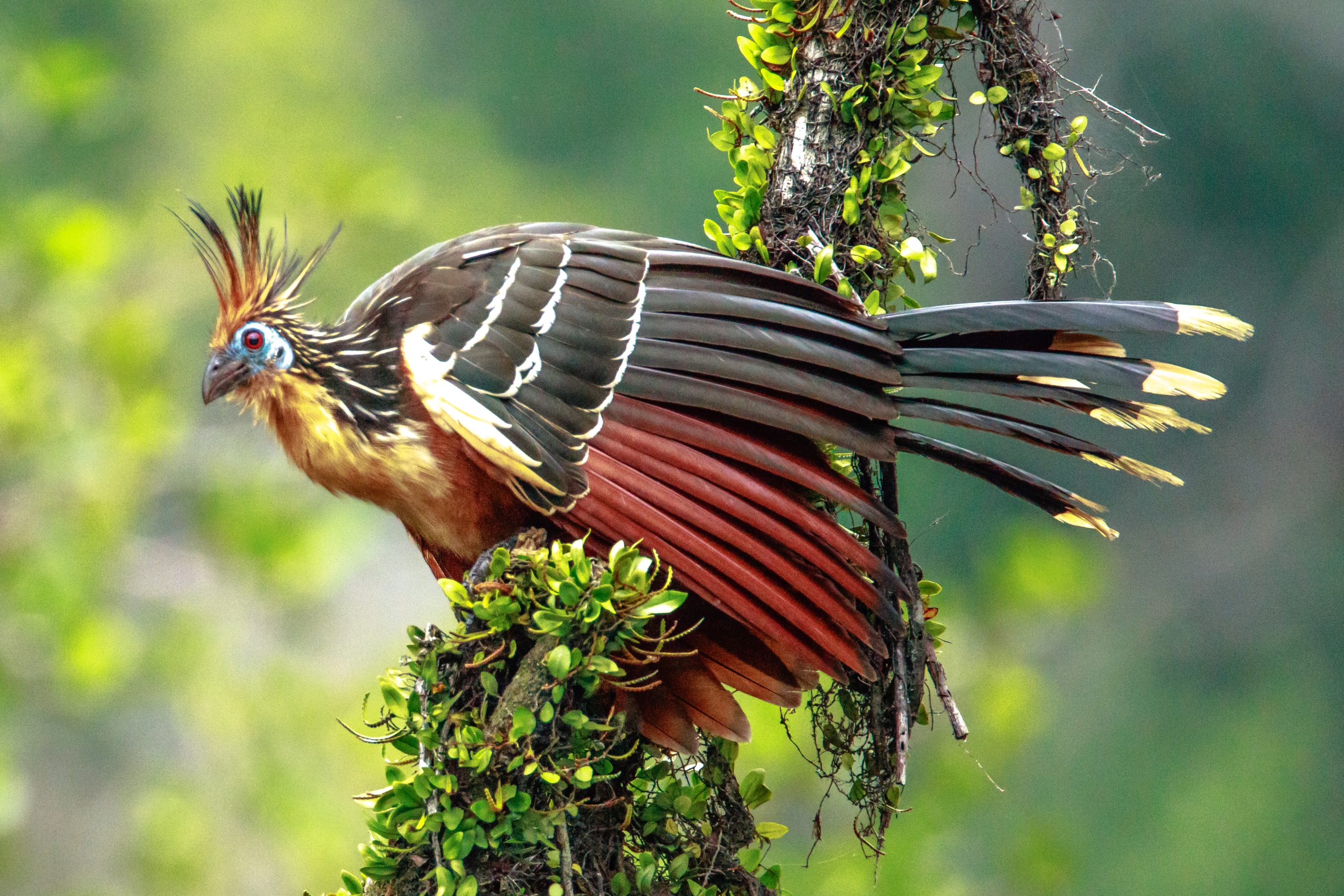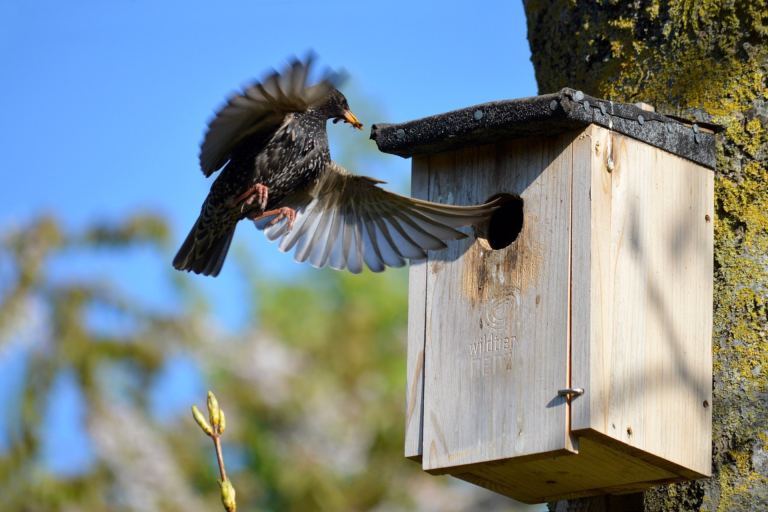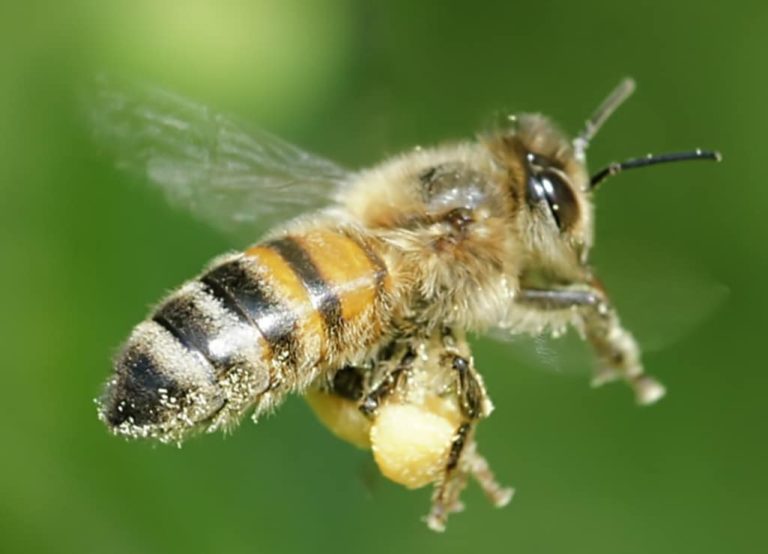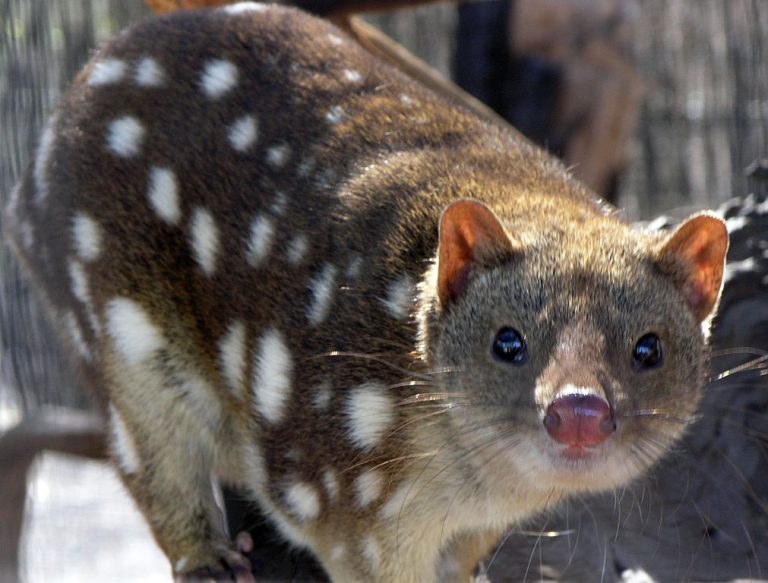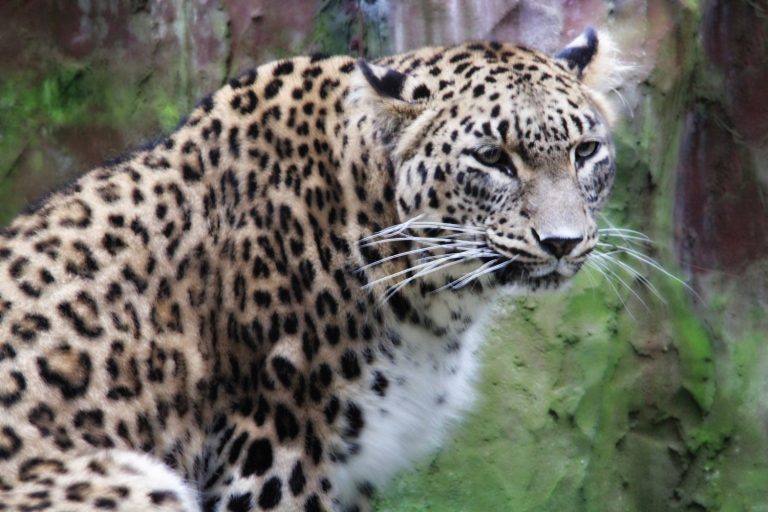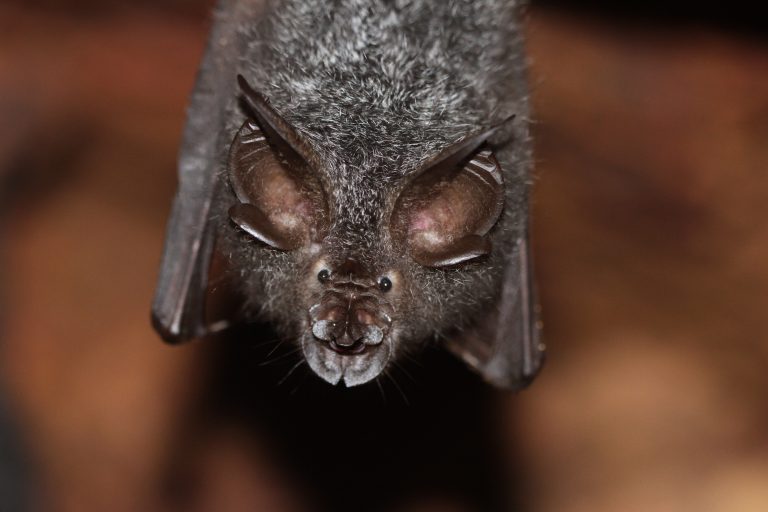The Hoatzin: A Bird So Beautiful Yet Smelly!
Have you ever heard of a bird that smells like cow dung? Yes, that’s the hoatzin, also, quite fairly, known as the stinkbird.
Smelling like that is not the only unusual thing about this bird though. There are other unusual and interesting things about this beautiful tropical bird, which you will learn about in this post.
The Hoatzin
Let’s get some basic information about the hoatzin first.
Scientific Name & Other Common Names
Scientifically known as Opisthocomus hoazin, the hoatzin is also commonly known as stinkbird, skunk bird, and reptile bird.
Habitat & Distribution
The hoatzin is found in the Amazon and Orinoco river basins in South America.
It specifically lives in swamps, riparian forests, and mangroves in the region. Areas with dense plant cover near water bodies are ideal for it to find shelter and food.
Unique Characteristics of the Hoatzin
So, what sets the stinkbird apart?
Physical Description
The hoatzin measures about 65 cm(26 in) in length.
It has a long neck and a small head. On its head, there’s a spiky rufous crest, a crest with reddish-brown feathers pointing out, that is. Its face is featherless and blue, with chestnut-colored eyes.
Its feather coat is mostly sooty brown with lighter, creamy-yellow markings(buff streaks), and its underpants are a pale yellowish-brown. Its long and bronze-green tail has a whitish band at the end.
The crest on its head and the chestnut-colored eyes against the featherless blue face give it a striking appearance.
Digestive system
The hoatzin is mostly a folivore, meaning that it eats leaves mostly. It consumes leaves of over 50 plant species. Even though it eats fruits and flowers as well, they make only a very small percentage of its diet.
So, the hoatzin has a unique digestive system that can ferment the leaves it eats. This fermentation mostly happens in its large, multi-chambered crop.
The bacteria in that crop break down the rough plant material from its diet. This is similar to what happens in ruminants like cattle. Methane gas is produced as a byproduct of this fermentation, and the bird lets it out by burping. It’s this methane that makes the hoatzin smell like cow manure.
Behavior of the Stinkbird
Let’s look into the behavioral characteristics of this bird now.
Feeding Habits
The hoatzin is mostly active during the day. It forages, mostly on leaves, in the early morning and late afternoon.
It tends to forage by moving slowly through dense foliage, grabbing branches and leaves with its strong feet.
It prefers young, tender leaves as they are easier to digest.
They forage in groups too, using vocalizations to communicate with one another for coordination and better foraging efficiency.
Sunbathing and Preening
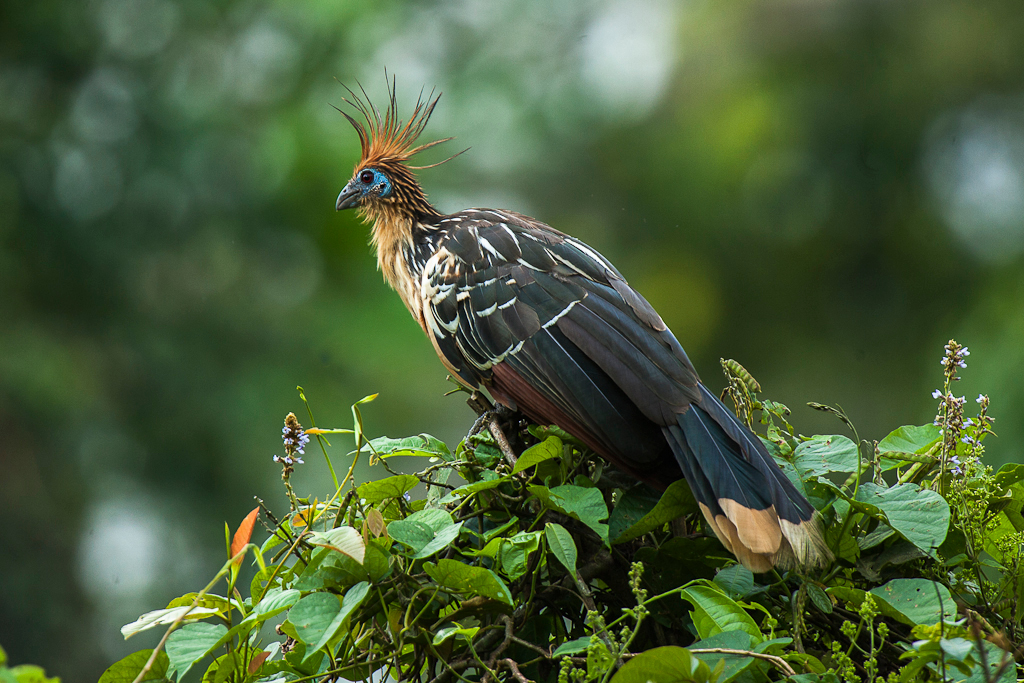
After feeding, they spent most of the rest of their time perched on branches, preening themselves and sunbathing.
This preening cleans their plumage and helps keep it waterproof by interlocking the feather barbs and barbules and spreading oils from their uropygial glands over it so water can not get through.
This is particularly useful in the wet environments they live in.
Vocalizations and Communication
The hoatzin is capable of producing a variety of sounds, including groans, hisses, grunts, and wheezing sounds.
It uses these sounds to communicate with the members of the flock while foraging and warn them about impending dangers, declare territory, attract mates, and communicate with its chicks.
Social Structure
Hoatzins usually live in small groups.
Often, there is a breeding pair in such a group, and some grown-up offspring of theirs are called helpers, with the number of group members ranging from 2 to 8.
The helpers assist the breeding pair with raising the chicks and feeding and protecting them.
It’s rare to see such cooperative breeding behavior among birds.
Flight
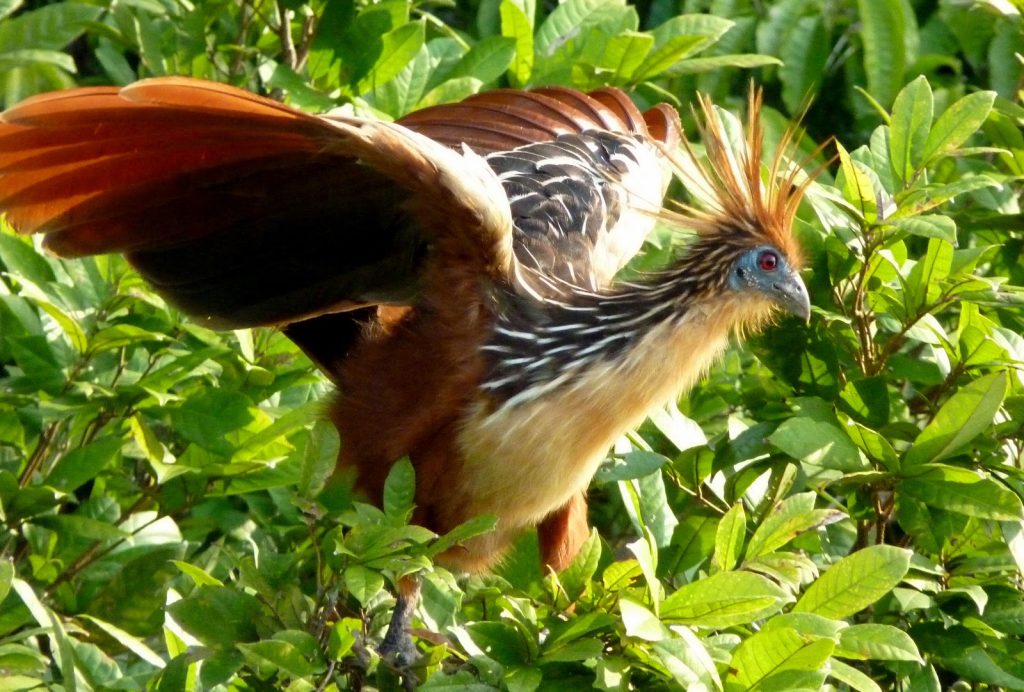
Hoatzins are not that good at flying.
Their wings are short and wide, so they are suitable for flapping for short periods, but for soaring over long distances or gliding.
Also, their large crops occupy a great portion of their body, making them too front-heavy and limiting the space the flight muscles attach to the sternum.
All this makes their flight awkward and too energy-consuming.
Juvenile hoatzins develop some kind of claws on the tips of their wings within the first few weeks after hatching. They use them to grab onto branches as they climb onto and move around through the plants in their habitats. They lose their claws as they mature.
As they are not very efficient flyers, hoatzins stay close to where they are born for the rest of their lives. In other words, they have small territories.
Reproduction
Let’s move on to how hoatzins reproduce.
Nesting Season and Nest Construction
Hoatzins do their nesting in the rainy season. The exact timing depends on their specific geographical location, as the rainy season comes in different periods in different parts of their natural range. Generally, nesting gets to its peak from April to June, but it can occur from February to July, and September to November, too.
Both members of a mating pair build their nest with sticks, leaves, vines, grasses, and in less documented cases, mud and soil, on branches of trees that hang over water.
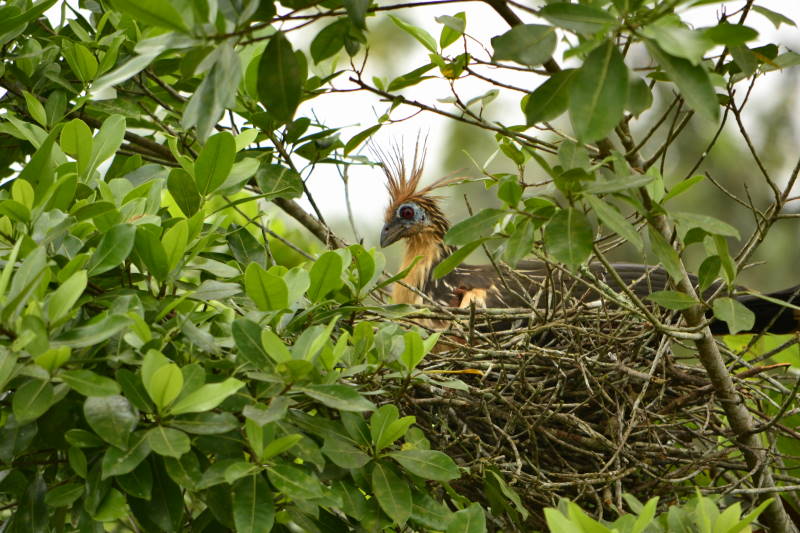
Egg Laying, Incubation, and Chick Care
The female typically lays 2-3 eggs, and then both parents take turns incubating them, for 32 days appropriately.
The chicks stay in the nest for 2-3 weeks after hatching, and both parents feed them regurgitated plant material during this time.
The chicks continue to be fed by the parents for up to two months.
Helpers’ Involvement in the Nesting Process
Helpers, subadult offspring from previous nesting seasons, assist the parents throughout the whole nesting process.
They help with gathering materials for nest building, feeding the chicks, and protecting the chicks from predators.
Conservation Status and Human Interaction
So, how is the hoatzin faring in its natural habitats at present?
What kind of role does it play in the culture of the local people of its natural range?
Let’s find out;
Threats to The Hoatzin
Even though it’s currently classified as “least concern” in the IUCN Red List, it faces several threats that stem from human activity.
Habitat loss caused by deforestation for agriculture is one of them. Especially, the hoatzin’s habitat is compromised due to rice cultivation in places like Guyana, Surinam, and Venezuela.
Hydrological development projects like dam and irrigation system construction contribute to habitat loss, too.
Disturbance of the nesting sites due to increasing tourism can mess with the hoatzins’ breeding too.
Also, hoatzins and their eggs are hunted in some parts of their natural range.
Cultural Significance
The hoatzin is important in the culture of the local people.
It’s the national bird of Guyana and represents the rich biodiversity of the region.
It’s also a symbol that reminds people of ancient times and the story of evolution, especially due to the features like the wing claws of the young chicks that are similar to the features of the Archaeopteryx, an early bird from the dinosaur era.
Conclusion
The hoatzin, or stinkbird, is a unique bird species with striking looks and an odor similar to cow dung due to its unique digestive system.
Found in the Amazon and Orinoco river basins, this bird shows fascinating breeding and social behaviors.
It feeds mostly on leaves and communicates through various vocalizations.
Despite being classified as “least concern,” in the IUCN Red List, the hoatzin faces threats caused by human activity.
Culturally significant as the national bird of Guyana, the hoatzin represents the rich biodiversity of its natural range and evolutionary history with its unique physical features.
